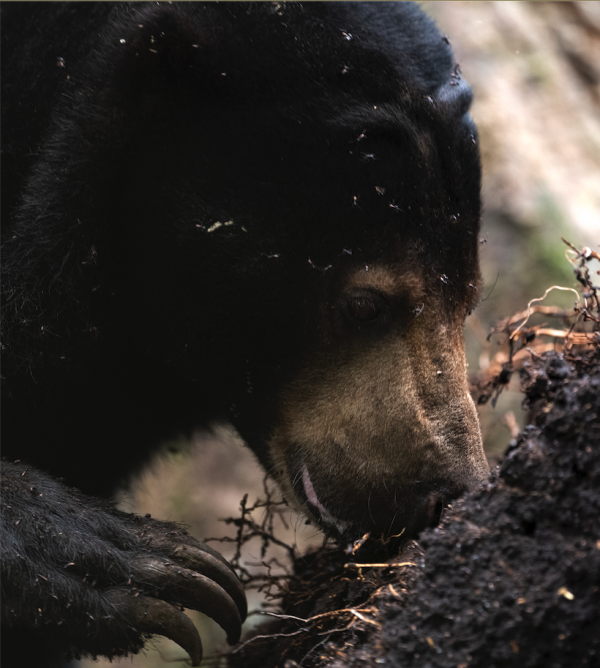Sokong usaha kebajikan ROOTS & SHOOTS dengan membeli rangkaian barangan eksklusif yang menarik.
PRE-ORDER (tempoh 10 hari pengeluaran sebelum penghantaran)
Saiz Foto: Saiz A2 (42.0 x 59.4 cm)
Bahan: Kertas Photo Rag
Sun Bear (Helarctos malayanus) adalah yang terkecil di antara lapan spesies beruang di dunia, kira-kira separuh daripada saiz beruang hitam Amerika. Nama umum ini datang daripada jalur putih atau kekuningan yang berbentuk bulan sabit di dadanya, yang secara imaginasi seperti imej matahari yang terbit atau terbenam. Fakta menarik ialah, setiap jalur di dada beruang ini adalah unik, seperti cap jari manusia.
Beruang ini hidup di hutan rendah masa tropika dan belukar di Asia Tenggara, dan sangat pemalu secara semula jadi. Diet utamanya terdiri daripada buah-buahan, kacang, beri, madu dan serangga kecil seperti kumbang, semut dan ant.
Rahang kuat Sun Bear membantunya mengoyakkan pokok dan kulit tebal untuk mendapatkan serangga yang bersembunyi di bawahnya. Jika makanan berada di atas pokok, mereka menggunakan kuku yang panjang dan melengkung untuk memanjat, serta lidah panjang dan kurus untuk mengeluarkan madu dari sarang lebah, sebab itulah mereka turut dikenali sebagai "honey bear". Seperti semua beruang, mereka mempunyai deria bau yang sangat tajam, dikatakan beberapa kali lebih baik daripada manusia.
Beruang ini menghadapi pelbagai ancaman termasuk kehilangan habitat, pemburuan haram dan perdagangan untuk digunakan dalam perubatan tradisional. Haiwan penting ini dalam pengedaran biji benih dan kawalan serangga perosak kini dikategorikan sebagai Vulnerable oleh IUCN.
Please support ROOTS & SHOOTS' welfare efforts by purchasing from its range of attractive exclusive merchandise.
PRE-ORDER (10 days of production before shipping)
Photograph Size: A2 Size (42.0 x 59.4 cm)
Material: Photo Rag Paper
The sun bear (Helarctos malayanus) is the smallest of the world’s eight bear species, about half the size of the American black bear. The common name comes from the white or yellowish crescent patch on its chest, which is (to the imaginative mind) like an image of the rising or setting sun. The interesting fact here is that each bear’s crest is individual, just like human fingerprints.
They live in the tropical lowland forests and shrublands of southeast Asia, and are extremely shy in nature. Their diet consists primarily of fruits, nuts, berries, honey and small insects like beetles, ants and termites. The sun bear’s powerful jaws help them tear into trees and thick bark to get at the insect burrowing beneath. If the food is high up on trees, they use their long, curved claws to climb up and their long, slender tongues to extract honey from beehives, a fact that has given them the nickname, honey bear. Like all bears, they have a strong sense of smell, believed to be several times better than that of humans.
They face multiple threats including habitat loss, illegal hunting and trade for use in traditional medicine. These animals, important to seed dispersal and pest control, are currently placed by the IUCN in the Vulnerable category.

